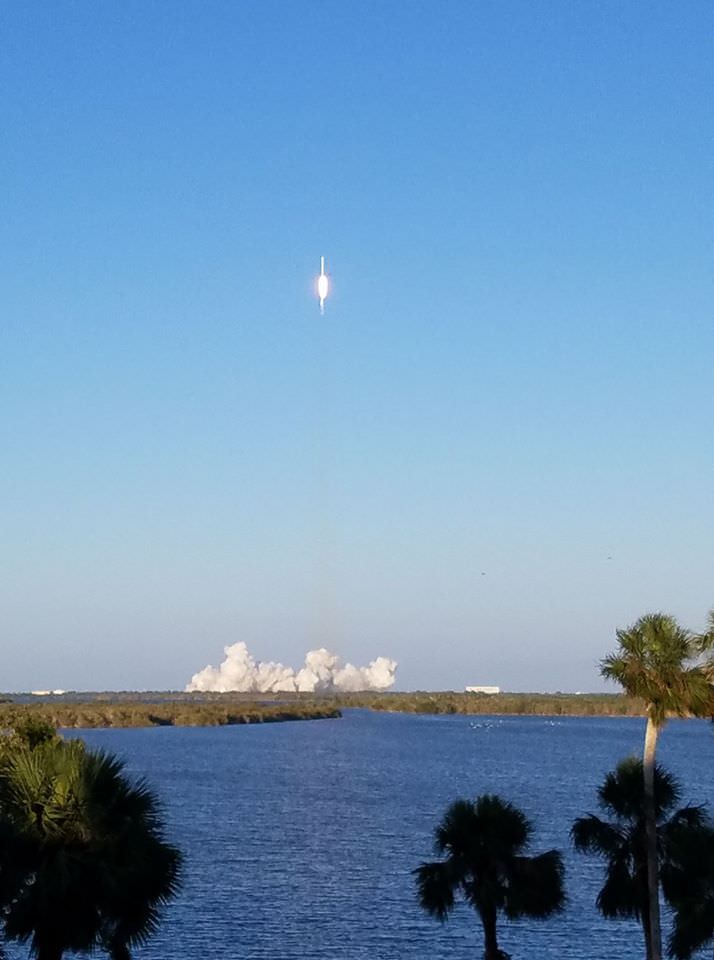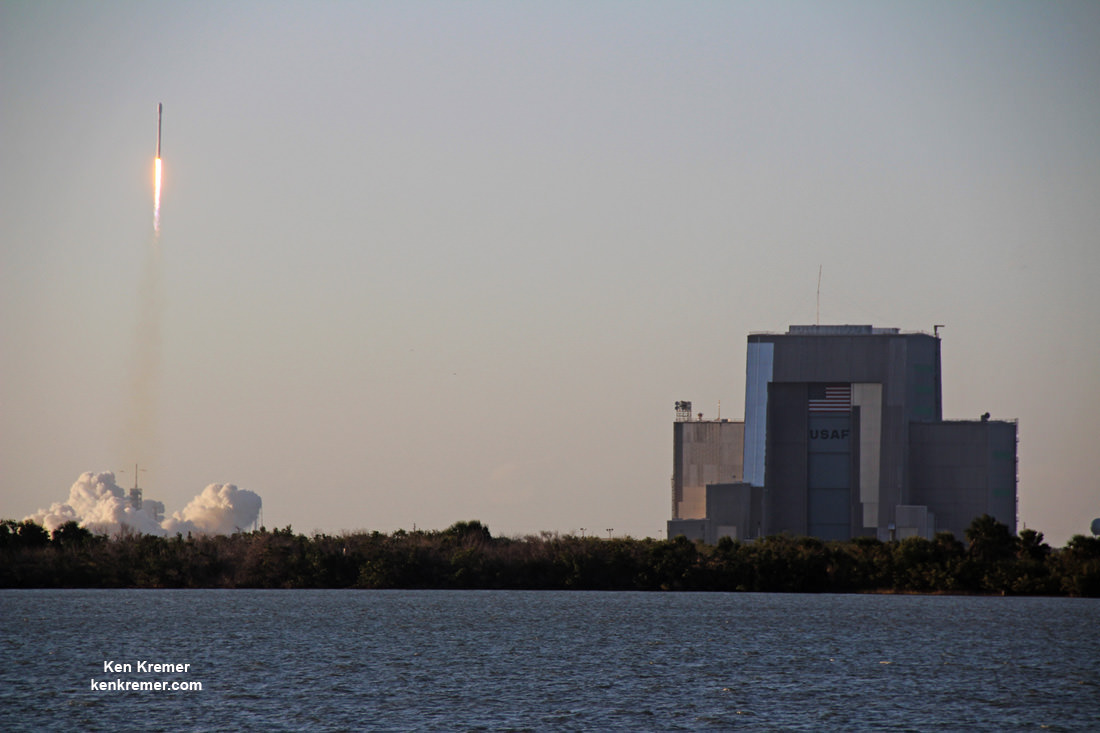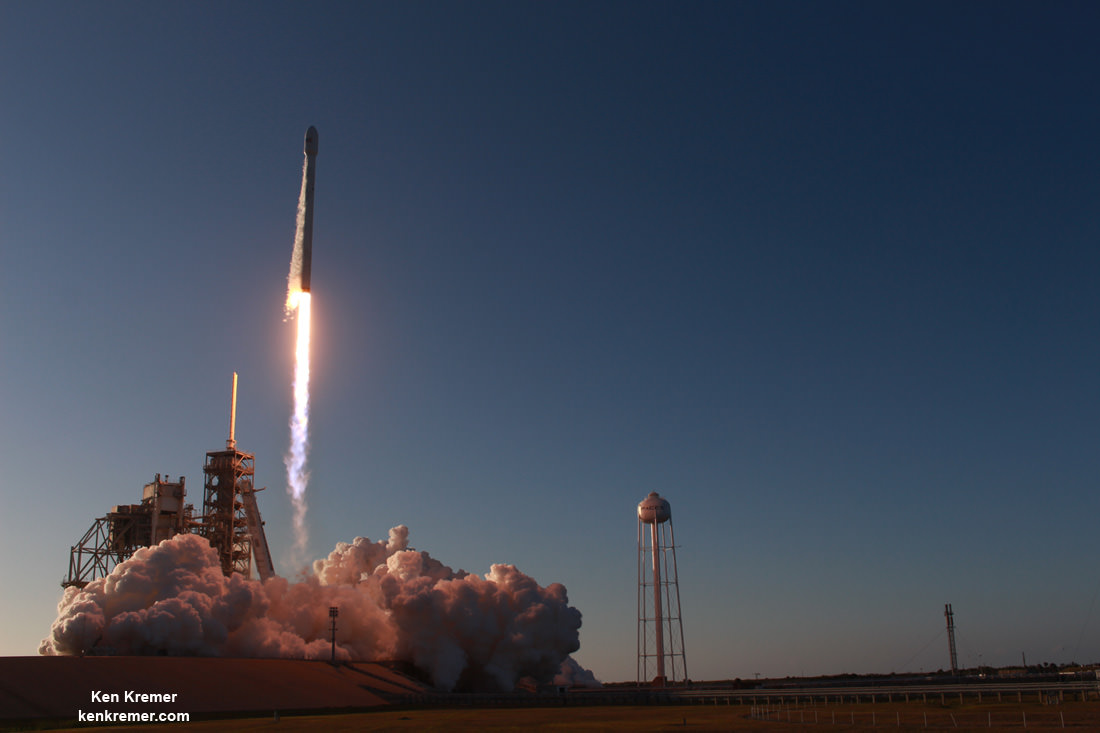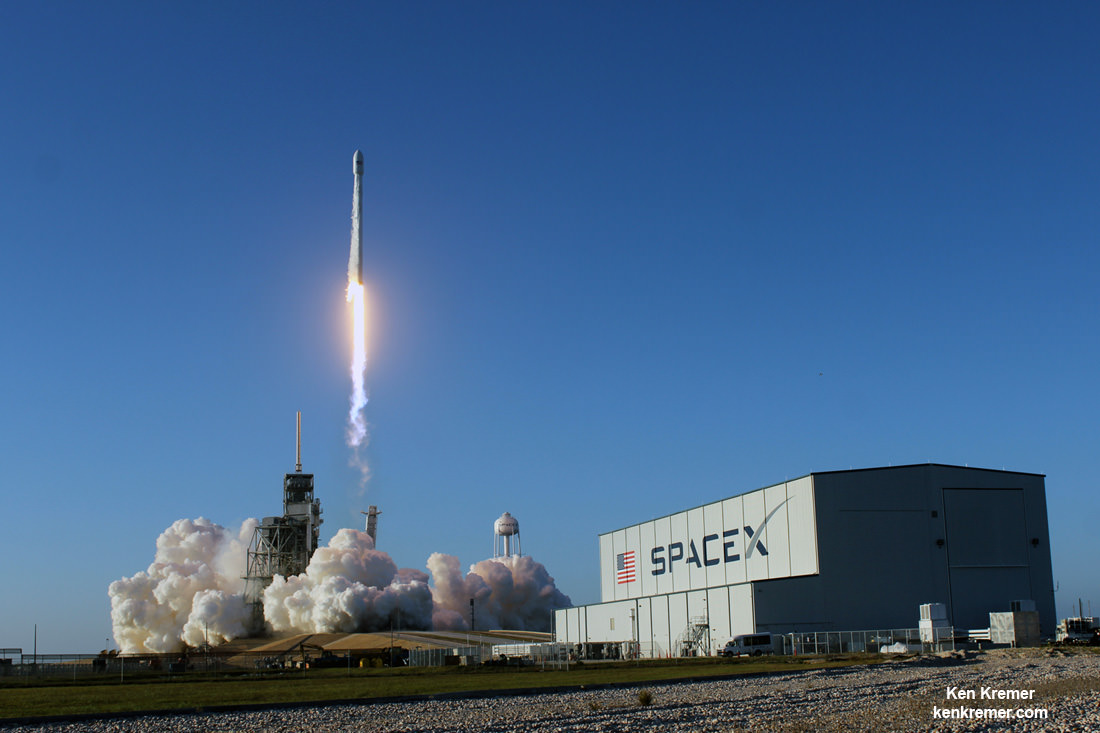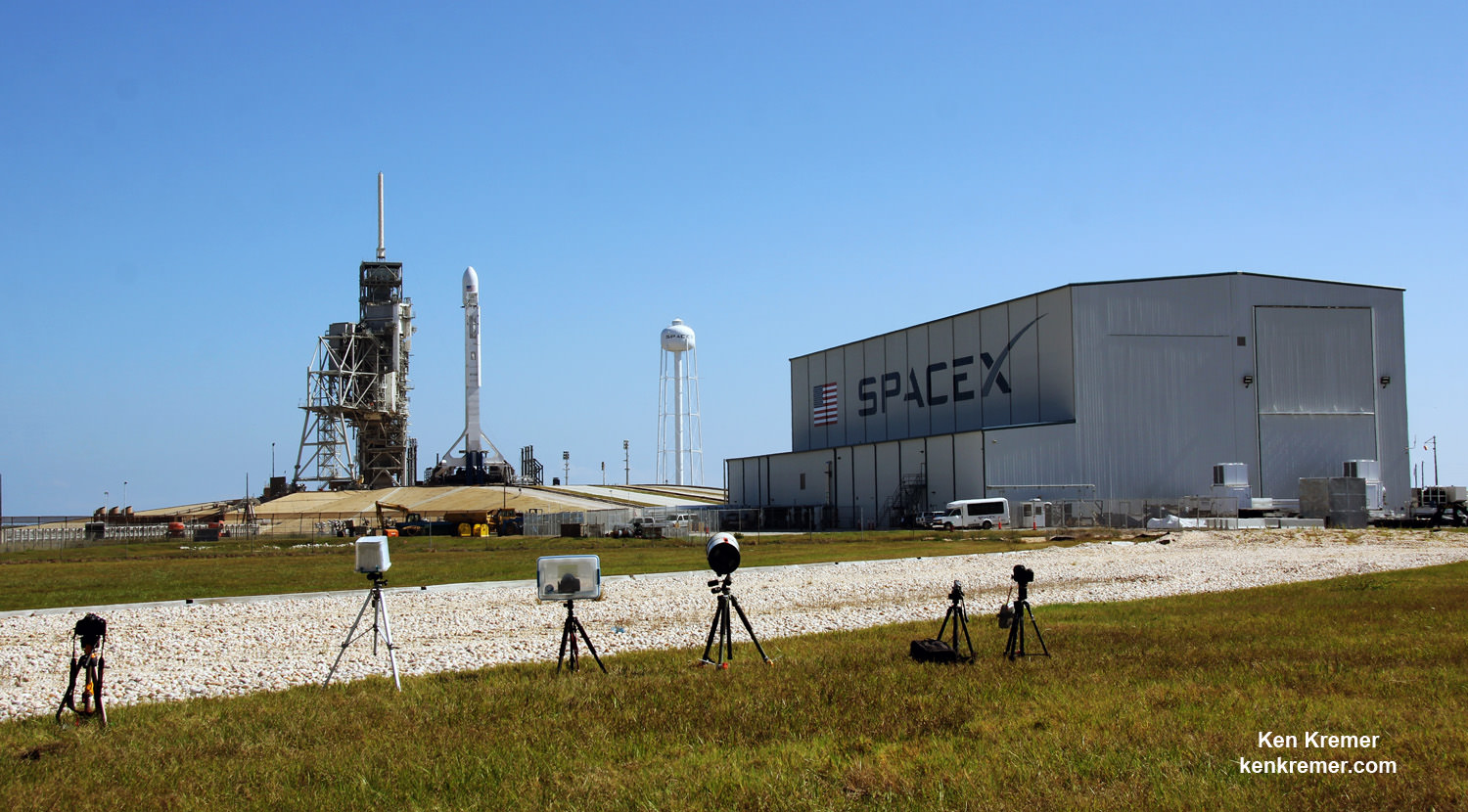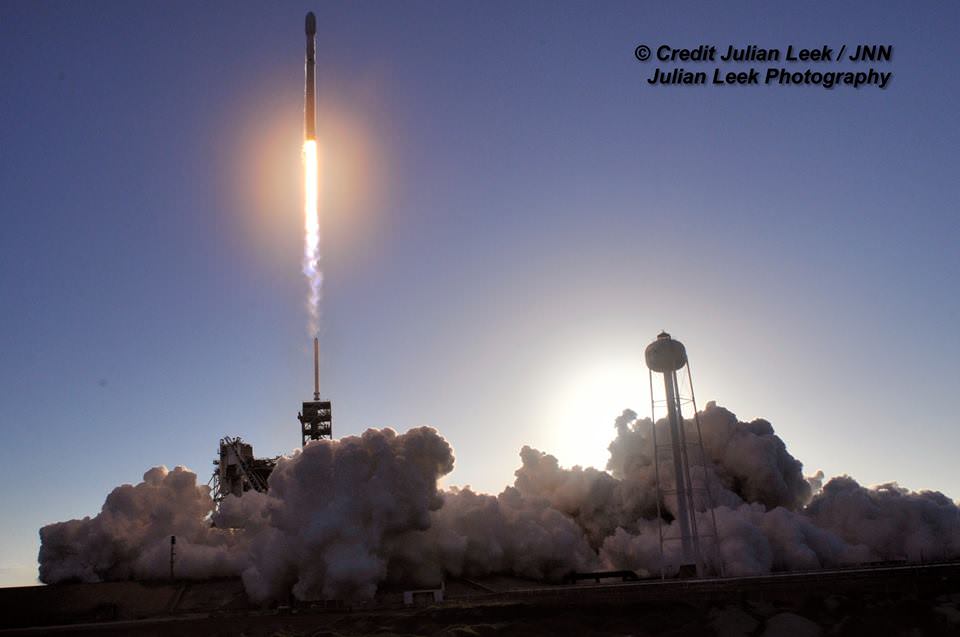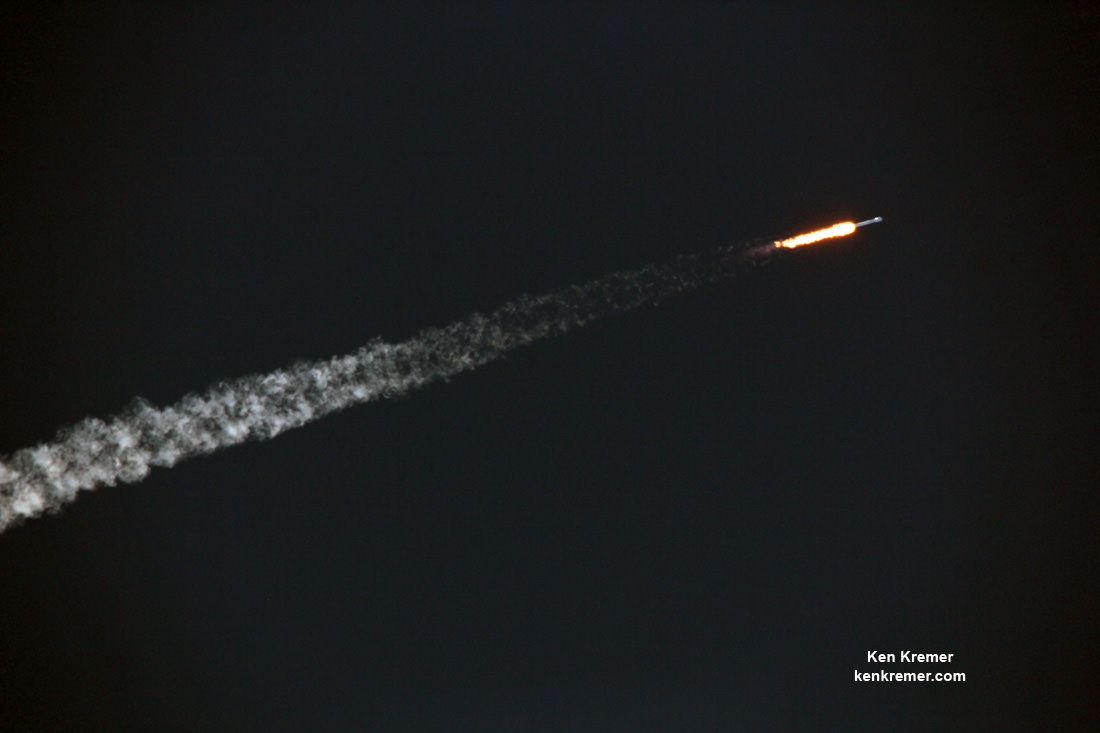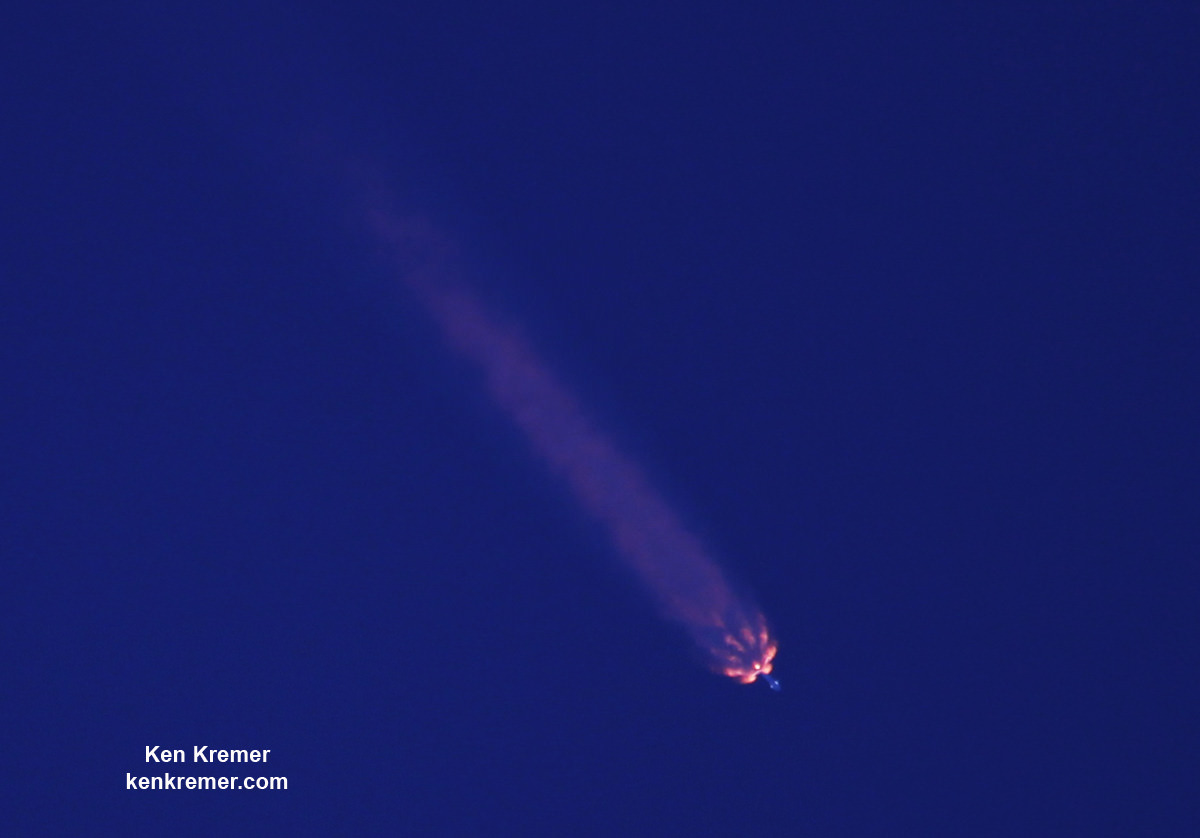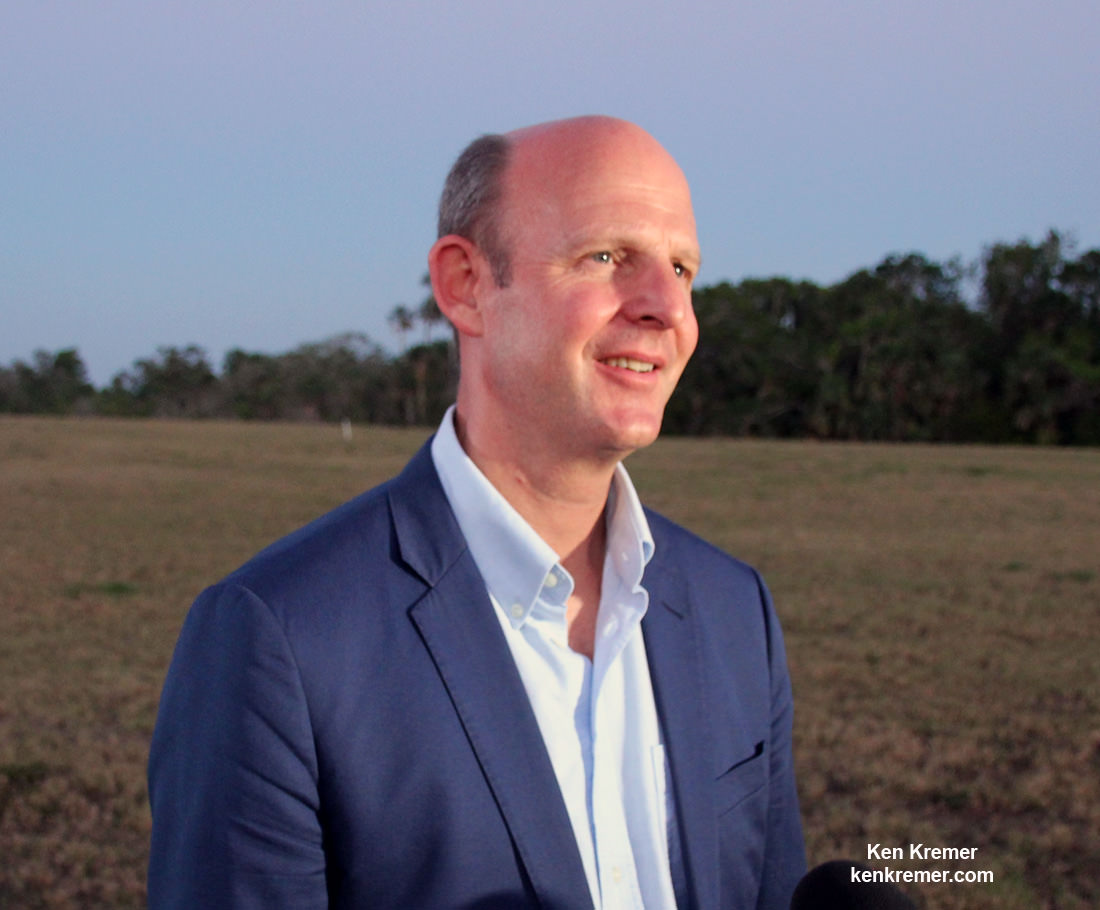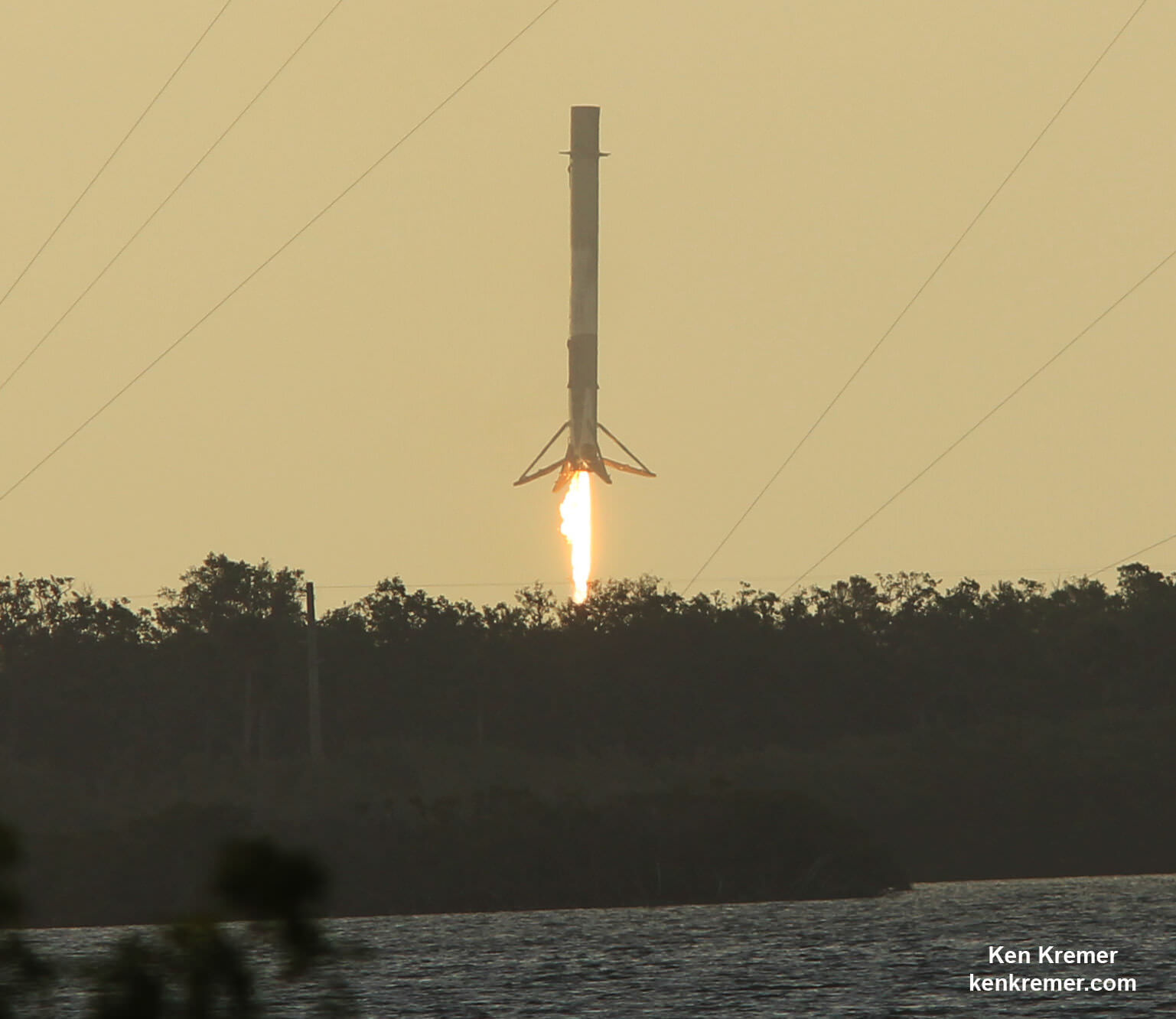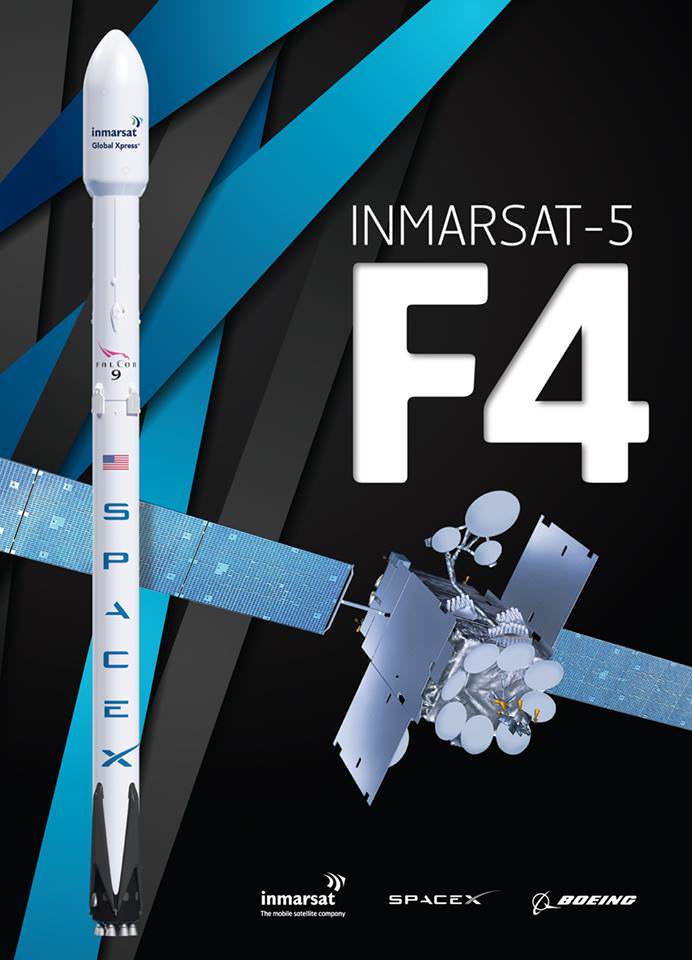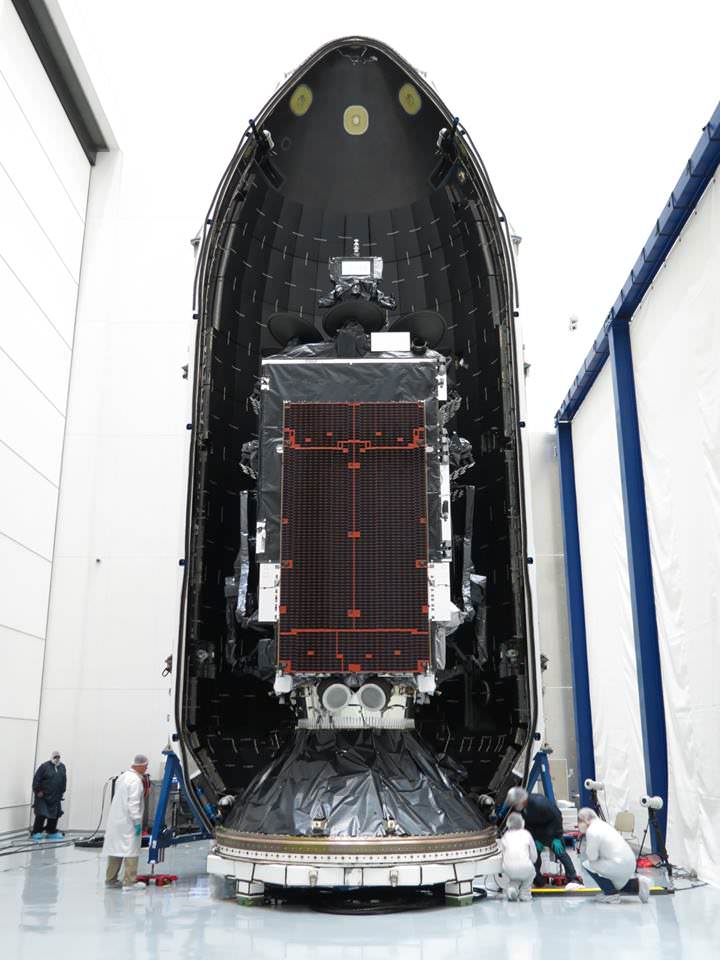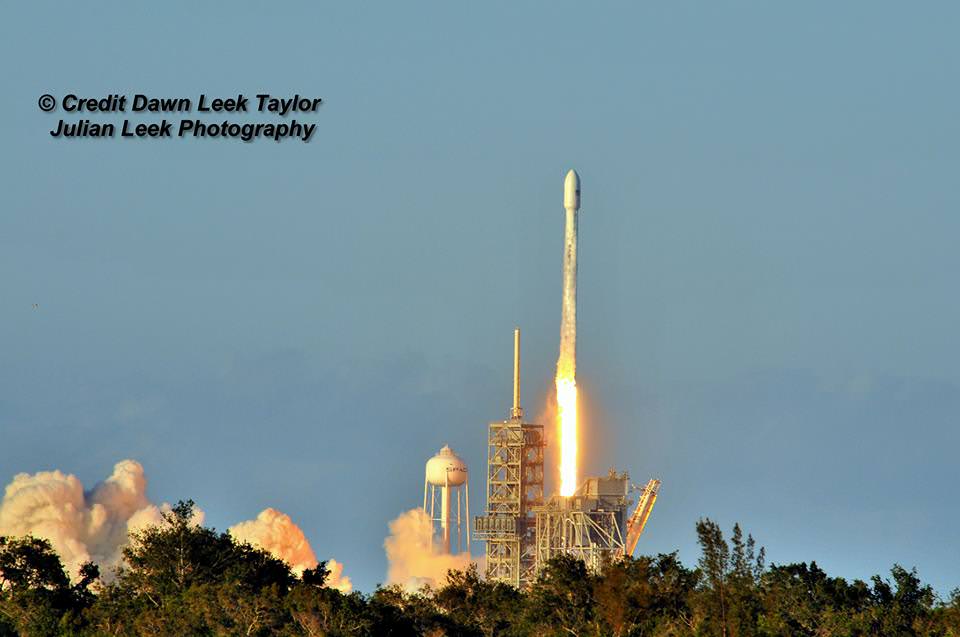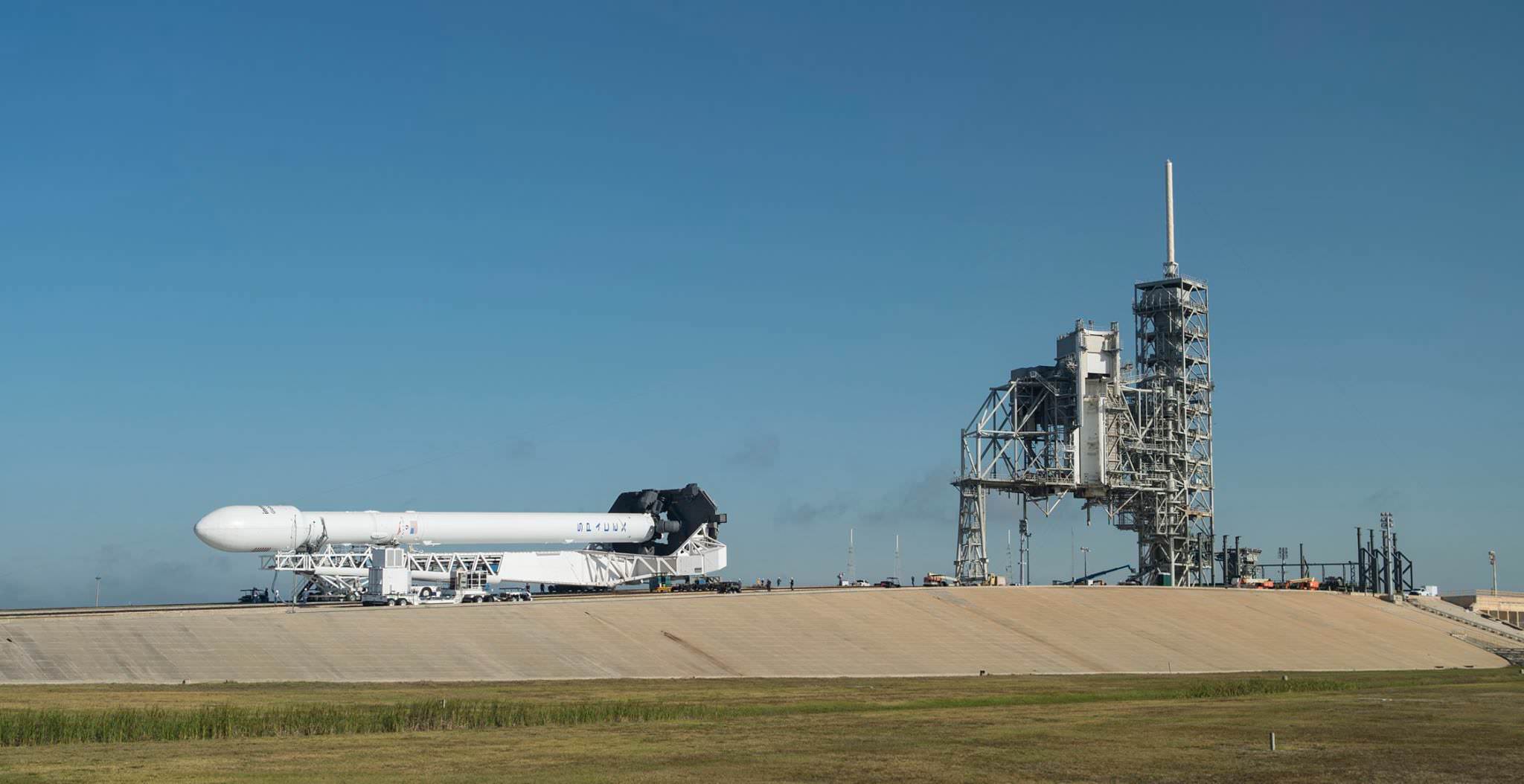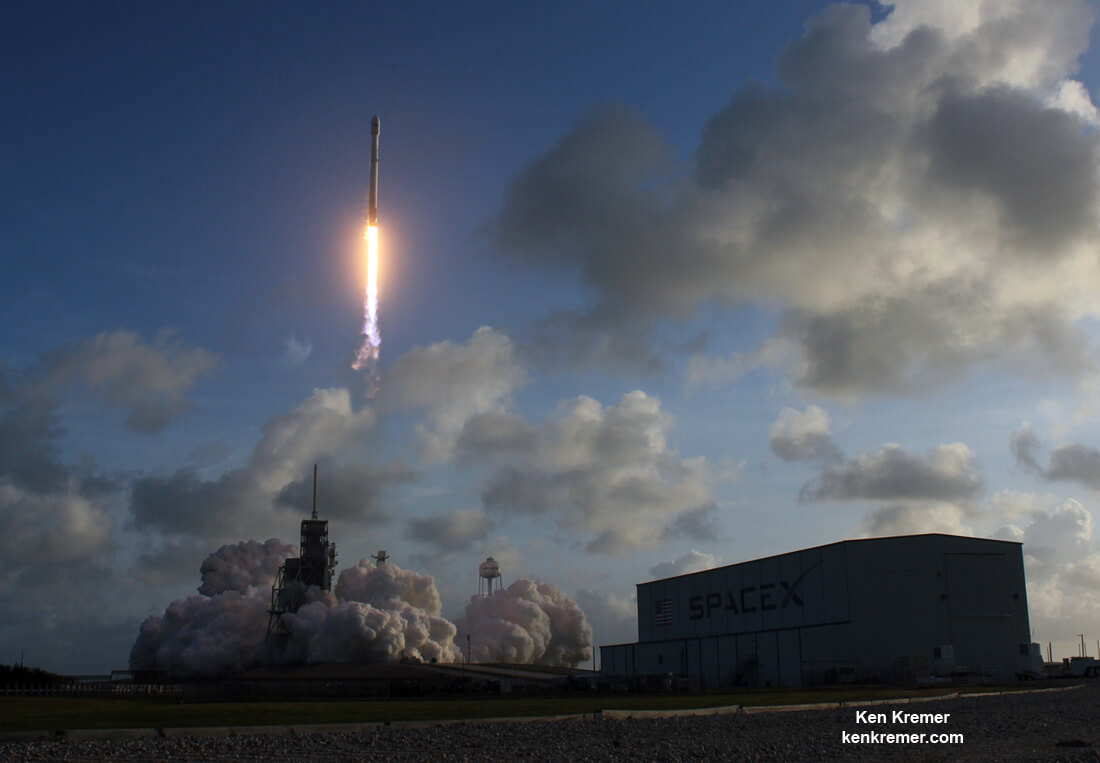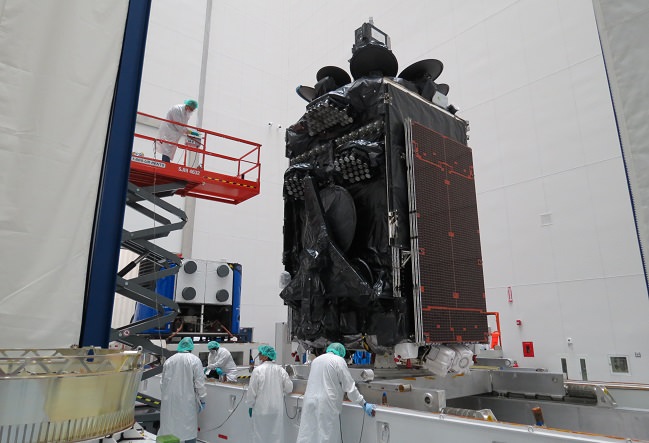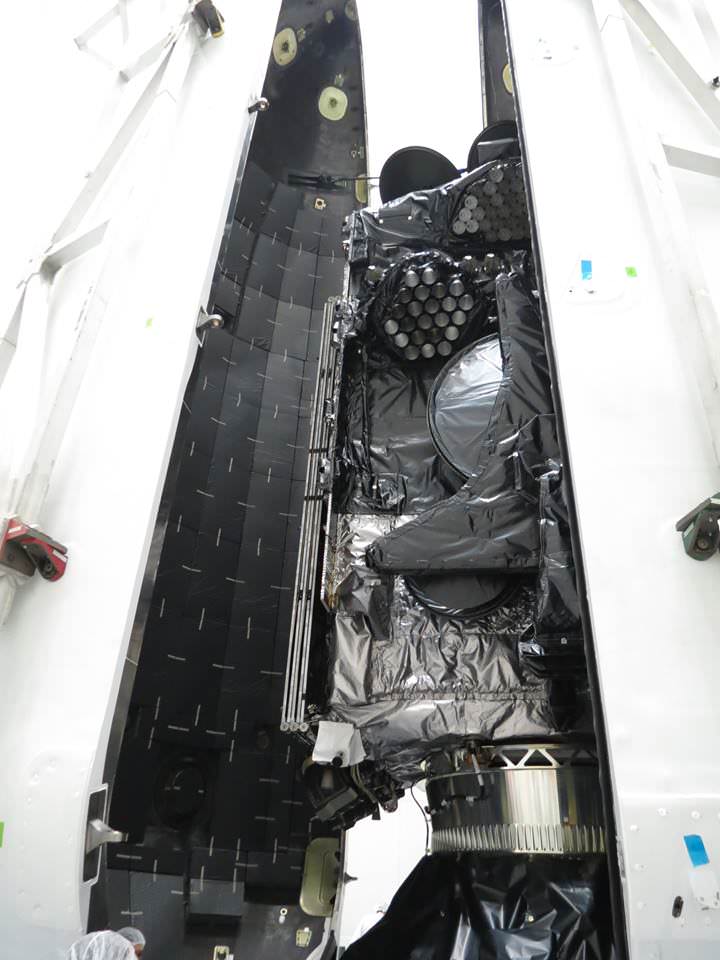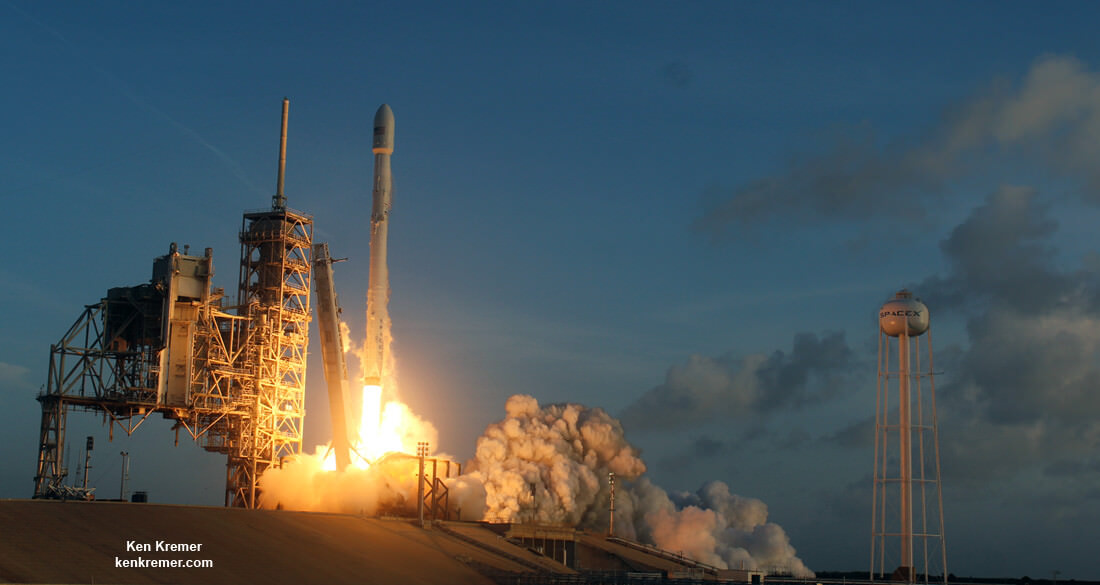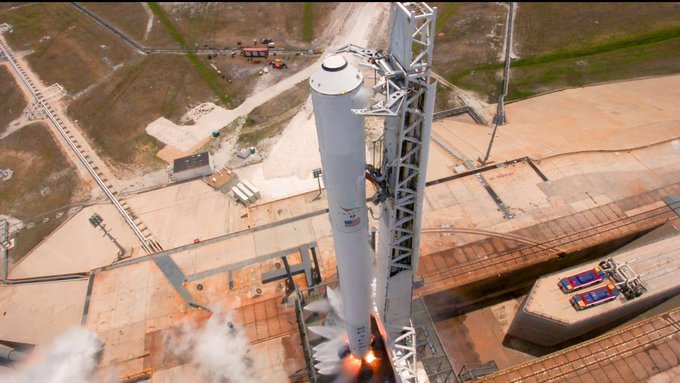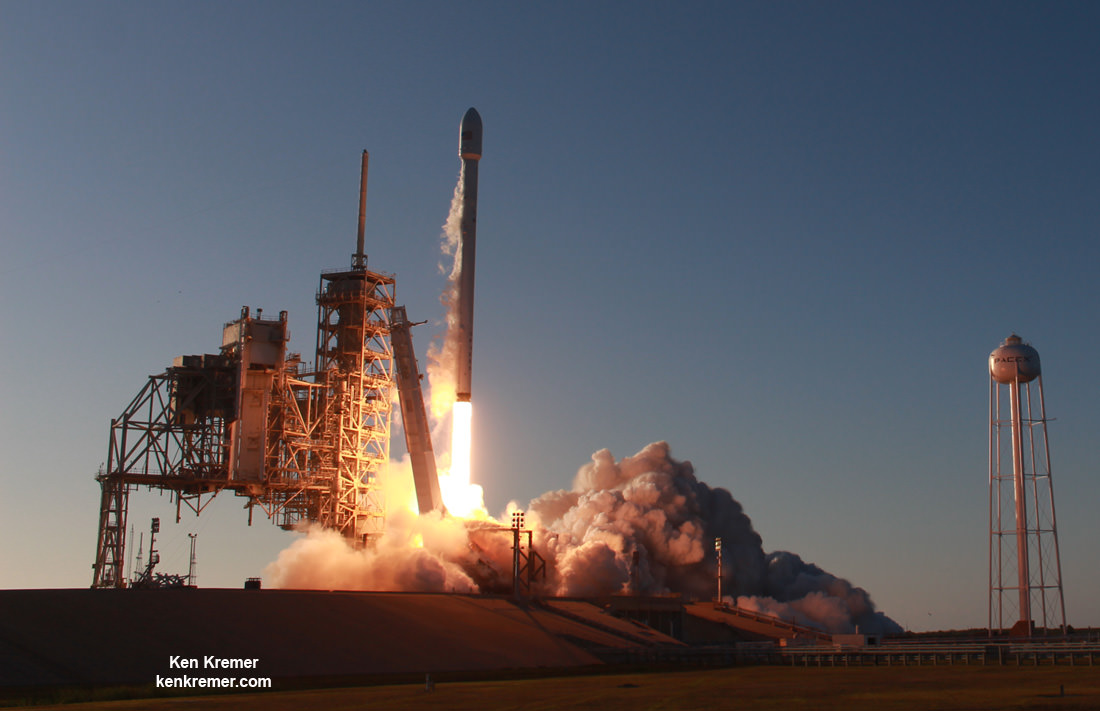
KENNEDY SPACE CENTER, FL – The worlds emerging ‘Digital Society’ gained a big boost following SpaceX’s stunningly beautiful twilight launch of a Falcon 9 that successfully delivered the huge 6.7 ton mobile Inmarsat-5 F4 broadband satellite to orbit for London-based Inmarsat on Monday, May 15.
SpaceX blasted the “largest and most complicated communications satellite ever built to orbit” for Inmarsat, the Inmarset CEO Rupert Pearce told Universe Today in a post launch interview at the Kennedy Space Center on May 15.
Inmarsat-5 F4 will eventually serve upwards of “hundreds of millions” of government, military, commercial and everyday customers on land, at sea and in the air as part of the firm’s satellite constellation forming the Global Xpress (GX) network, he explained.
“This has obviously been an absolutely exceptional performance from SpaceX,” Peace elaborated.
The twilight sendoff of the SpaceX Falcon 9 carrying the commercial Inmarsat-5 Flight 4 communications satellite for High-Speed mobile broadband provider Inmarsat occurred at 7:21 p.m. EDT (or 23:21 UTC) on Monday evening, May 15, from SpaceX’s seaside Launch Complex 39A on NASA’s Kennedy Space Center in Florida.
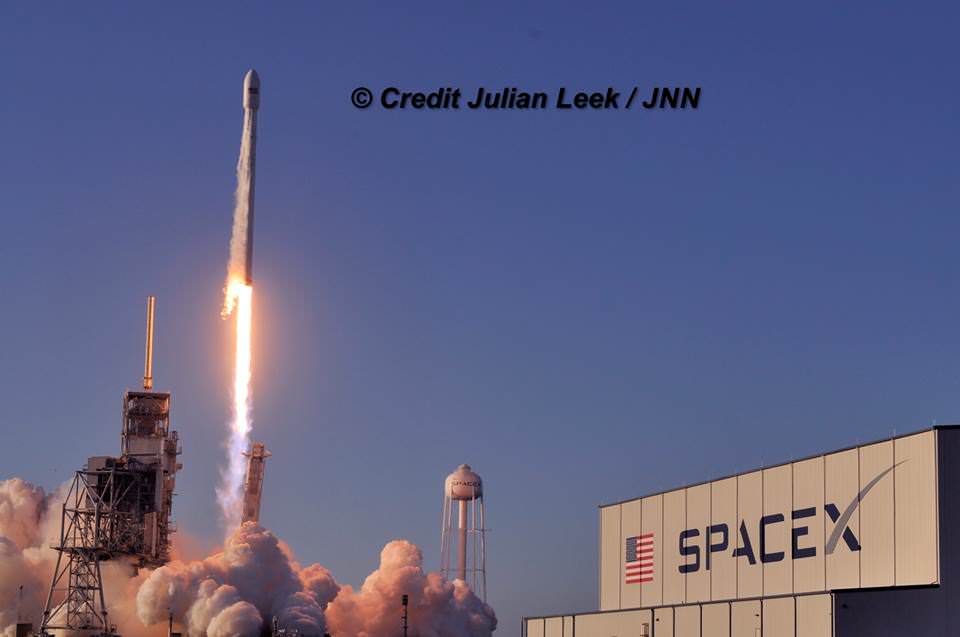
The spectacular liftoff events were captured by journalists and tourists gathered from around the globe to witness history in the making with their own eyeballs.
Check out this expanding gallery of eyepopping photos and videos from several space journalist colleagues and friends and myself – for views you won’t see elsewhere.
Click back as the gallery grows !
The Inmarsat-5 F4 satellite is designed to provide high speed broad band service to government, military, maritime and aviation users and ship and airplane customers numbering in the millions to tens of millions of customers now and potentially hundreds of millions of customers in the future.
It was the heaviest payload ever launched by a Falcon 9.
I asked CEO Peace to explain the customer based expected for the Global Xpress (GX) network.
“We expect to reach millions to tens of millions of customers,” Pearce told me.
“At the moment we are making huge strides with the first three satellites – serving governments around the world; most notably the US government and US defense department.”
“And serving the maritime industry. And serving the aviation industry.”
“We are looking at a world where suddenly passengers want wifi on the aircraft they are flying on. So we could be talking about hundreds of millions of customers [passengers] on aircraft being served by that satellite in the years to come.”
The new I-5 F4 satellite joins a constellation of 3 others already in orbit as part of a US$1.6 billion investment forming the firms transformational Global Xpress (GX) network.
“Inmarsat Global Xpress has been in operation delivering seamless, high-speed broadband connectivity across the world since December 2015,” says Inmarsat.
“Inmarsat GX is the world’s first globally available, broadband connectivity service and was created to enable communities across the world to benefit from the emerging digital society.”
Check out these exquisite videos from a wide variety of vantage points including remote cameras at the pad, Kennedy Space Center and Cape Canaveral media viewing sites and public viewing locations off base.
Video Caption: SpaceX Falcon 9 launch of the Inmarsat-5 F4 satellite from Pad 39A. The I-5 F4 is the fourth Ka-band, mobile broadband satellite launched for the Global Xpress constellation, it was built by Boeing Network and Space Systems. Credit: Jeff Seibert
Video Caption: Launch of SpaceX Falcon 9 on May 15, 2017 from pad 39A at the Kennedy Space Center carrying Inmarsat-5 F4 broadband satellite to geosynchronous orbit for the Global Xpress constellation – as seen in this remote video taken at the pad. Credit: Ken Kremer/kenkremer.com
The 229-foot-tall (70-meter) SpaceX Falcon 9 successfully delivered the gigantic bus sized 7 meter long Inmarsat-5 F4 satellite to a Geostationary Transfer Orbit (GTO) under brilliant blue and nearly cloudless twilight skies from the Florida Space Coast.
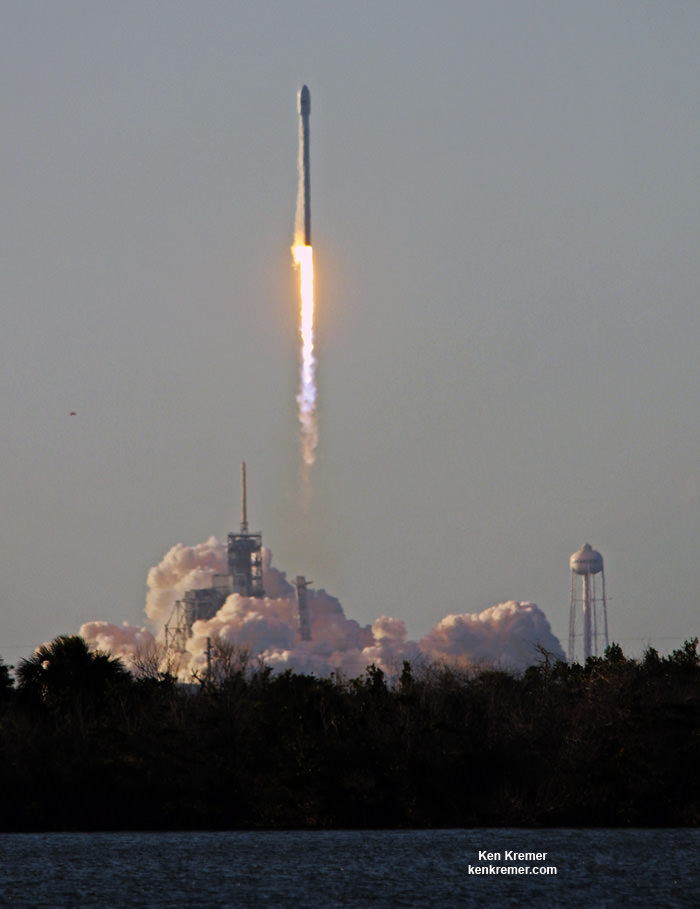
The 6,100 kg (13,400 lbs) Inmarsat-5 Flight 4 communications satellite was built by Boeing at their satellite operations facility in El Segundo, CA for Inmarsat.
TInmarsat 5 F4 counts as the sixth SpaceX launch of 2017.
And SpaceX continues tracking on an absolutely torrid launch pace. Monday’s liftoff took place just 2 weeks after the prior successful SpaceX Falcon 9 liftoff on May 1 of the super secret NROL-76 payload for the National Reconnaissance Office, or NRO – as I reported here.
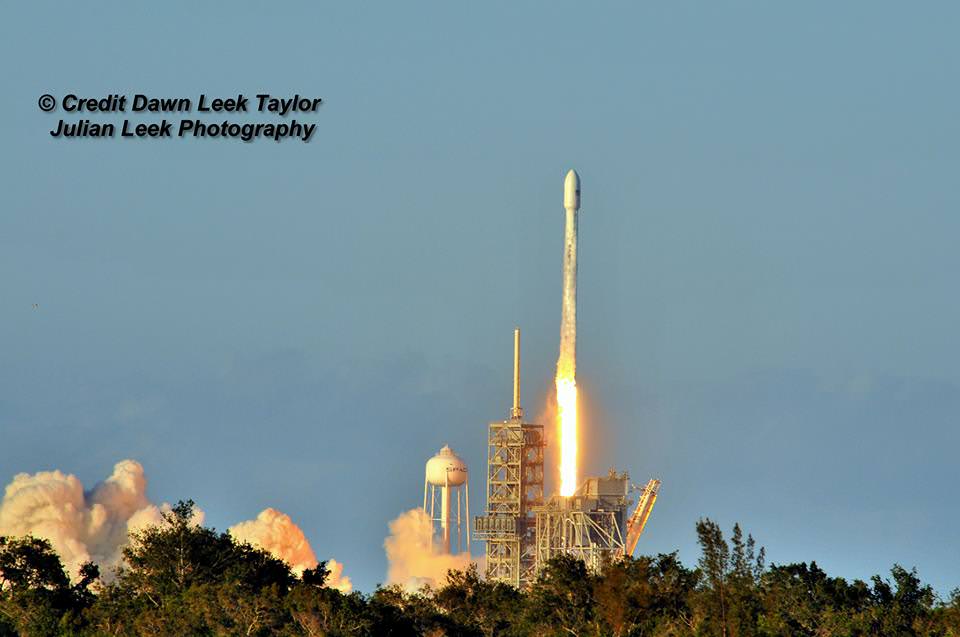
Watch for Ken’s continuing onsite launch reports direct from the Kennedy Space Center and Cape Canaveral Air Force Station in Florida.
Stay tuned here for Ken’s continuing Earth and Planetary science and human spaceflight news.

